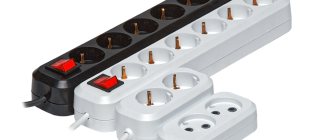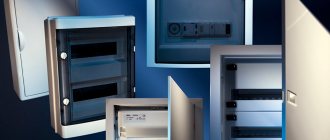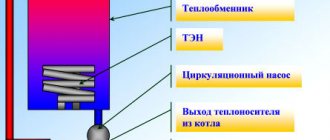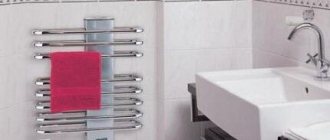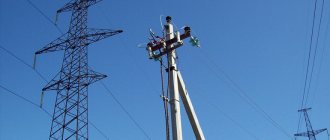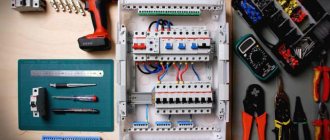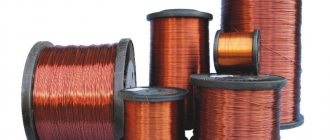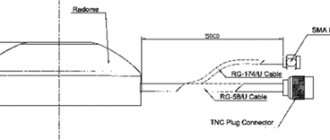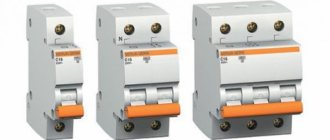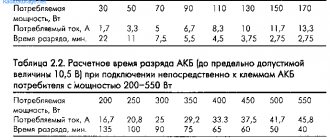Extension or carry-on, as builders call it, is an electrical device needed in every home. It is used in cases where there is a need to increase the “native” cord of an electrical appliance. Most often this is a TV, home computer, table lamps. Widely used by home craftsmen for drills, hammer drills and other repair and construction electrical appliances. It would seem that there is nothing complicated here: go and buy it, but no, there are several subtleties that we will examine in the article.
Extension type
First, a little theory - let's look at all the variety that you will definitely find on store shelves. So, depending on the purpose and design features, extension cords are:
- household - the simplest and most accessible. The socket block can be equipped with a power button - this is the maximum functionality for this type of device. There may or may not be grounding. The length of the wire varies from 1.5 to 10 m, the cross-section - from 0.75 to 1.5 mm, which determines the maximum power of simultaneously connected devices, but we’ll talk about this later. Regular extension cords can be connected to each other, but they do not have short circuit protection;
- network filters - These are advanced extension cords that are equipped with additional options. The contactor protects against overvoltage, the filter choke protects against high-frequency interference, and the varistor dissipates impulse noise. Some models have 1 or 2A USB connectors for charging gadgets. Surge protectors protect equipment, but they also cost quite a bit and are larger in size than conventional extension cords;
- garden extension cords The design is similar to household ones, but protected from moisture. These may be protective curtains, circuit breakers or fuses. Such devices are distinguished by a long wire - from 20 to 100 m, and can be equipped with a pin for convenient fastening in the ground. The only drawback of such extension cords is their size and inconvenience in storage.
For most of you, a regular household extension cord will do, but they are different, so first of all, you need to answer a number of questions:
- What is the distance from the outlet to the equipment?
- What equipment will be connected, what is its power?
- Under what conditions will the extension cord be used?
- What additional functions should the device have?
In fact, the answers to all these questions are the main parameters for choosing an extension cord for your home.
The best power extension cords for one outlet
Power extension cords for one outlet will be an excellent solution if you have your own household: you can connect a saw, a jigsaw or a lawn mower one at a time.
1st place – power extension cord LUX YC1-E-10 (Y-161)
This power extension cord will be the best option for individual repair work on a small scale: the PVA wire is not afraid of bends and large loads that may accidentally end up on it, and the length of 10 meters will allow you to carry out work in the yard without any difficulties or inconveniences. The socket is completely safe thanks to the rubberized body; it is not afraid of high humidity.
Maximum power – 2200 W.
Cable cross-section – 3x0.75.
The average price is 550 rubles.
Advantages:
- Affordable price;
- Wire with grounding;
- Bright cable color, visible from afar;
- Rubberized socket.
Flaws:
- Low power for a power extension cord;
- Cable length is only 10 m;
- Before work, be sure to unwind the wire completely.
Length of cable
The parameter that attracts attention first of all is the cable length. The longer the wire, the more freedom the user gets, because you can be at a sufficient distance from the outlet. When it comes to garages, terraces and cottages, this is priceless.
Remember that the longer the cable, the more power is lost, and if you connect a low-quality or faulty product, overheating may occur, and then the cable may catch fire or short circuit.
A cable that is too long will be difficult to work with when its entire length is not needed. You will have to unwind it, but it is worth remembering that the device can only withstand the rated load with the unwound wire. The manufacturer must indicate the maximum current when the cable is wound and unwound.
At a construction site and in a garage, when purchasing an extension cord with a wire length of up to 20 m, it is better to use models equipped with a winding reel , but even here you should be extremely careful. The fact is that when powerful equipment is operating, the wire will heat up, so it is better to buy extension cords with fuses - they protect against overload.
At home, when connecting powerful equipment, it is better to unwind the wire to ensure the best heat dissipation. It is believed that heating a cable up to 650C is acceptable, but just imagine what can happen if the turns of such a heated wire come into contact with each other! The insulation will begin to melt, and then it won’t be long before a short circuit occurs.
On sale you can find devices with wire lengths from some 0.5 m to 50 m and even more. The optimal cable length in an extension cord for domestic conditions is from 3 to 7 m.
Recommendations for installing lighting in a wall switch
If there is not enough space to place a resistor or you do not have the required power at hand, then the resistor can be replaced with several of lower power, connecting them in series or in parallel.
When resistors of the same resistance are connected in series, the power dissipated on one resistor will be equal to the calculated power divided by the number of resistors, and their value will decrease and will be equal to the calculated value divided by the number of resistors. For example, according to calculations, a resistor with a power of 1 watt and a nominal value of 100 kOhm is required. 1 kOhm = 1000 Ohm. This resistor can be replaced with two 0.5-watt, 50-kOhm resistors connected in series.
When connecting resistors of the same resistance in parallel, the power is calculated as with a series connection, and the value of each resistor must be equal to the calculated value multiplied by the number of resistors connected in parallel. For example, to replace one 100 kOhm resistor with three, the resistance of each must be 300 kOhm.
When installing the circuit, connect the resistor (capacitor) only to the phase wire of the switch. Since the currents flowing through the circuit elements do not exceed several milliamps, there are no special requirements for the quality of the contacts. If the box with the switch in which the backlight will be mounted is metal, then it is necessary to exclude the possibility of the current-carrying conductors touching its walls.
It is impossible to spoil anything when installing the backlight in a wall switch, since the lamp itself is a current limiter. The worst thing that can happen is the failure of the mounted elements if serious mistakes are made. For example, turn on the LED without a current-limiting resistor, or the resistor value is mistakenly taken to be 100 ohms instead of 100 kOhm.
Wire cross-section and maximum load
These two parameters are directly dependent on each other: the larger the cross-section of the wire, the greater the load it can withstand. A simple analogue is the diameter of the water pipe. The more consumers there are, the larger the pipe must be so that everyone has normal pressure.
Extension cords are made from standard wires, so the following cross-section options are possible:
- 0.75 mm2 - designed for current up to 6A or voltage 1380 W. An excellent option for lamps and chargers, as well as modern TVs - they have low power;
- 1.00 mm2 – conducts current 10A, voltage 2300 W. Suitable for connecting low-power household appliances and tools
- 1.5 mm2 – designed for current 16A, voltage 3680 W. Can be used with a washing machine, heater, or any household construction equipment;
- 2.5 mm2 and more - extension cords, needed at construction sites and in production conditions, are suitable for connecting powerful devices and equipment.
For rough calculations, you can use the following rule: 1 mm2 wire cross-section can withstand a current of 10 A.
There are even extension cords with a 0.5 mm2 core , but it is strictly not recommended to plug them into something more powerful than a table lamp. For home use, it is best to take a device with a wire of at least 1.5 mm2, so that it is a more or less universal device with protection against fools, since there will always be someone who does not look at the maximum load and connects a powerful heater to the extension cord.
Extension cords with a wire of more than 50 m must have a cable cross-sectional area of at least 2.5 mm2.
Information about the cable cross-section can be found on the wire itself - it is marked accordingly. As a rule, the outer diameter of the wire indicates the cross-section, but there are exceptions. One thing is clear - if a thin cable leads to the socket block, then it is better to connect low-power electrical appliances.
First, think about what devices you are going to connect, and then go buy an extension cord. We recommend taking it with a reserve, since in the future more powerful devices may be included in the list of connected devices. Please note that if an extension cord can withstand 10A, this does not mean that a 10A device can be inserted into every outlet. We are talking about the total load.
What happens if you exceed the permissible load? The wiring may heat up and begin to melt, the junctions of the wires may burn out, resulting in smoke and fires.
How to choose a household electrical extension cord
Household extension cord, what should it be? Often in the operating instructions for household appliances, the manufacturer advises not to supply power through an extension cord, but to plug the appliance directly into the outlet. This is understandable, since the socket contains a wire capable of withstanding the energy consumption of such devices as a washing machine, iron, etc.
But it also happens that you can’t do without a long “helper”. So how to choose the right extension cord?
First of all, we look at the electrical extension cord. If it is flat, then it is most likely a cord, and its core cross-section usually does not exceed 0.5 mm2; such an extension cord can only include an electric razor.
For extension cords, the most optimal wire is PVA; it is round, so it will not twist during operation; the outer insulation is thick, which protects the wire from physical damage. Color does not matter.
Usually the cross-section is indicated on the wire; on household extension cords it can be 0.75 mm2, 1 mm2 and 1.5 mm2, the last cross-section is the most optimal, such a wire can withstand up to 3.5 kW. When working with an extension cord, be sure to unwind it completely, do not leave it twisted, this can lead to heating and melting of the insulation.
In addition to the wire, the extension cord has a group of sockets or simply a block, it comes in 6A, 10A and 16Amps, it is clear that the more the better. All modern sockets are divided into universal and euro; a universal socket can be plugged into any old-style or euro plug, but such an extension cord will not have a third core in the wire for grounding. However, if the outlet into which you plug the extension cord does not have a ground, then there is no point in the extension cord.
There is an opinion that the plug holds better in Euro sockets. So, if you plan to use both Euro and regular plugs, then here’s a good tip: remember which hole you insert the Euro plug into, and insert it only there. Due to the fact that the Euro plug has thick contacts, the contacts in the block diverge over time and a regular plug begins to wobble.
If, when choosing an electrical extension cord, you doubt its quality, or its declared strength, then you can very easily get out of this situation. You need to do the following: buy separately a PVS wire of 1.5 mm2, a 16A block and a plug, preferably a Euro one, it will match this wire, assemble everything yourself, and this is not at all difficult and will only take about ten minutes, and use it with confidence, By the way, many professional electricians do this.
Cable type
The type of wire is selected depending on the conditions in which the extension cord will operate. Among the most common options:
- PVS – the wire has a sheath of plasticized PVC, copper cores, a round cross-section, and is inexpensive, which affects the final price of the extension cord. The material is afraid of negative temperatures, becomes tanned in the cold, and is also susceptible to abrasion. For domestic conditions, when the extension cord is not particularly tugged or frozen, this type of cable is perfect. Another disadvantage is the sufficient massiveness, but it becomes critical when the core cross-section is more than 2.5 mm2;
- SHVVP It is used much less frequently and is distinguished by a flat cut. Due to the thinner insulation, the cable takes up less space. It is suitable for domestic conditions, but under heavy loads, for example, at a construction site, it may not withstand and become unusable;
- KG (flexible cable) suitable for harsh conditions. The core insulation and cable sheath are made of rubber. This cable can withstand frost and heat and is resistant to mechanical stress, which is why it is the best option for difficult construction conditions. However, such a wire should not be left in direct sunlight for a long time.
The best extension cords with a high protection class
Electrical equipment of this type is characterized by a robust design and sealing to protect internal elements from moisture and dust.
Union 481S-4201
5
★★★★★
editorial assessment
100%
buyers recommend this product
The Soyuz rubber extension plug protects the cable from kinks and breaks, is not afraid of sharp impacts and has a tight fit. Rubber-coated plug sockets are also resistant to mechanical damage.
The maximum load is 3700 W, rated current is 16 Amps. Tight-fitting covers reliably protect sockets from exposure to water and contamination, and grounding contacts and durable conductors guarantee high electrical safety during use.
Advantages:
- durable body;
- break-resistant wire;
- tight fit of the fork;
- protective covers for sockets.
Flaws:
- high price.
Union 481S-4201 is suitable for use in difficult conditions on a garden plot or construction site.
IEK WYP10-16-05-05-44-N
5
★★★★★
editorial assessment
97%
buyers recommend this product
The model is made in a bright orange color to attract attention - this allows you to quickly find the extension cord in a dimly lit place. The spring-loaded lids close independently and fit snugly into the sockets, eliminating the risk of moisture and dust (not to mention larger debris) getting inside.
Maximum load - 3500 W at a current of 16 Amps. The case is made of impact-resistant and non-flammable material, it is not afraid of falls from great heights and scratches. At the cable entry point on the block there is an anti-fracture element that protects the wire from damage.
Advantages:
- durable body;
- tightness;
- bright color;
- spring-loaded socket covers;
- double insulated wire.
Flaws:
- heavy construction.
The IEK WYP10 is suitable for use on a construction site even in bad weather.
Universal USH-16 (5568960)
4.8
★★★★★
editorial assessment
88%
buyers recommend this product
Grounding and dense insulation of the wire ensure a high level of electrical safety of the model. The socket is complemented by a base that protects it from external influences and guarantees a tight fit of the plug.
The maximum load is 3500 W at a rated current of 16 Amps. The cable is not afraid of kinks and twisting thanks to a special seal. The durable body is resistant to sudden impacts.
Advantages:
- dense insulation;
- durable housing with a high base;
- flexible cable;
- low price.
Flaws:
- small section.
Universal USH-16 is designed to connect one consumer. This inexpensive extension cord is suitable for working with powerful power tools at heights.
VCOM CE026-CU0.75-0.3M
4.6
★★★★★
editorial assessment
80%
buyers recommend this product
The VCOM device has a dust- and moisture-resistant design. The elastic cover is fixed on the cable for easy storage. Shutters on the contacts provide an additional level of protection, protecting against electric shock.
The diameter of the conductor is 0.75 mm, the permissible load current is 7 A. The extended socket prevents the core from breaking when bent or twisted. The durable fork is characterized by a tight fit and resistance to mechanical damage.
Advantages:
- tightness;
- elastic plug;
- curtains on contacts;
- protection of the cable from breaking;
- durable fork.
Flaws:
- very short wire - 30 cm.
VCOM CE026-CU0.75-0.3M can be used in conjunction with a surge protector. A reliable choice for connecting one consumer.
Number of sockets and plug type
The number of sockets varies from 1 to 4, or even up to 5-6. Such a large number of sockets are made not so that you can use 4-6 devices at once, but so that you can insert a plug and not remove it for a long time. There are still empty slots. Thus, both the extension cord and the cord of the electrical appliance will last longer.
Don't chase too many outlets - take the extension cord that suits your needs. If you are going to connect only one device, then there is no point in taking an extension cord for 4 outlets.
Pay attention to how the plug-in contacts of the sockets are located. The most convenient location is diagonally. In other cases, it may be problematic to connect two devices to adjacent sockets.
Have you inspected the outlet block? It's time to look at the extension plug. Give preference to cast forks , which are more reliable and safer. In addition, such plugs are more difficult to produce, so in this case it will be more difficult to run into a makeshift extension cord.
Molded fork
Collapsible fork
Illuminated switches for electrical appliances
Illuminated switches are often installed in switches on carriers and extension cords, heaters and other electrical appliances. They usually have a neon light bulb with resistors built into them. I once had to repair a Pilot type extension cord in which the switch control key fell out and cracked.
When I disassembled the switch, I did not find a current-limiting resistor, which I was very surprised by. Neon bulbs must not be connected to a 220 V electrical network without current limitation. It will fail immediately. On the left photo is a view of the key from the side where the neon light bulb is installed, and on the right, the reverse side of the same switch key.
I measured the resistance between the spring and the terminal of the neon light bulb, it was 150 kOhm. This switch used an interesting design solution: two 150 kOhm resistors were installed in the key holes and a spring pressed them to the terminals of the neon light bulb, ensuring reliable contact. The springs themselves exert pressure on the movable contacts in the switch, from which, when the switch is in the On position, power is supplied to the neon light bulb.
Grounding
Grounding is a useful option that will reduce the risk of electric shock when operating a faulty electrical appliance, and will also reduce the level of interference in equipment connected to the same network or located nearby. The grounding conductor is especially important when connecting to the extension cord of a washing machine and refrigerator. True, grounding will be relevant only when the apartment is connected to the ground loop.
What is another name for a socket?
Plug socket
- a connector attached to an apparatus or structural element or the like.
... In professional activities and in everyday life they often say “connector”, “plug” (from the German Stecker “plug”). Sometimes the plug and socket are called
"male" and "male" respectively.
Interesting materials:
What do you need when registering a car with the traffic police? What should you take to burn fat? What do you need to pass for driving school? What do you need to pass for your license? What needs to be checked in a car? What do you need to collect to replace your driver's license? What should you ask when buying a car? What needs to be insured under MTPL? What do you need in a car? What do you need for a driving school?
What is the difference between a surge protector and an extension cord?
An extension cord for a computer is a simple wire, at one end of which there are several sockets, and at the other end there is a plug. The cheapest ones do not have power buttons.
If the house has old wiring and modern circuit breakers are not installed, it is better to buy a surge protector. It has a number of differences from simple extension cords.
- There must be buttons to turn it on and off.
- The presence of a circuit breaker that trips during power surges.
- Ensuring protection of equipment from radio frequency and electromagnetic interference.
It is recommended to use a specialized splitter to connect desktop computers, peripherals, and laptops.
